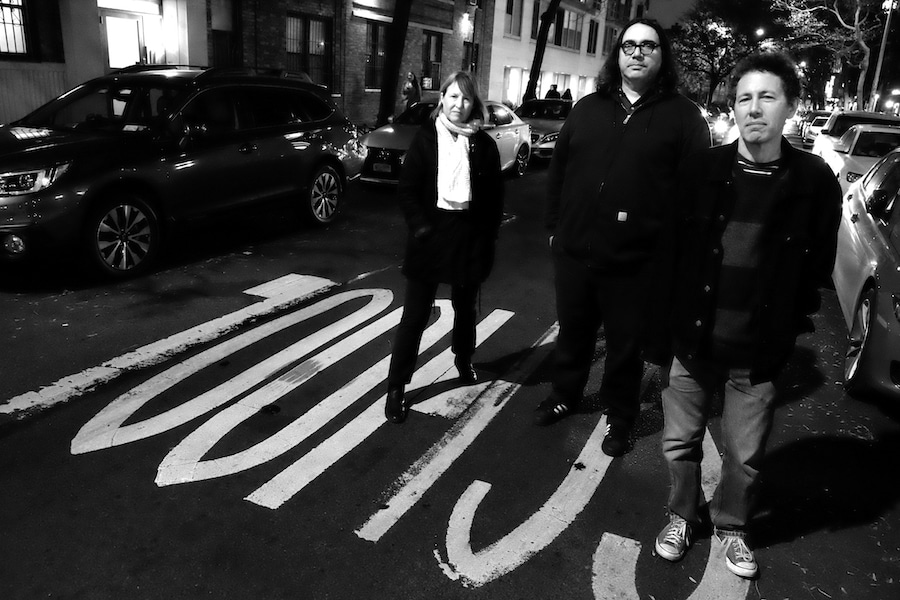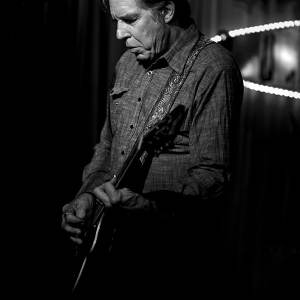
In their more than 30 years of playing music together, Hoboken, New Jersey indie rock trio Yo La Tengo have amassed a sprawling catalog of music. The band has covered a broad range of styles and sounds since their 1986 debut Ride The Tiger, having delved into powerful squalls of noisy psychedelia and stunning collections of hushed lullabies alike, not to mention their various collaborative releases, film scores, albums released under aliases, and otherwise. On March 16, the band released its dreamy, heavily improvised 15th studio album, There’s A Riot Going On, via Matador Records. American Songwriter spoke with guitarist and vocalist Ira Kaplan about going in with a blank slate, looking at the big picture, and what can be learned from playing other people’s music.
Videos by American Songwriter
This album was made without any pre-rehearsals — how much of a role did improvisation play in writing the album?
The whole thing is kind of improvised in a certain sense. A lot of things were just played and tried, and sometimes things that were tried would lead us to something else. The record is a long period of spontaneity. We didn’t rehearse for it, so … ideas come up and it takes a few cracks to render that idea. But it’s not like we spent a lot of time planning things before doing them.
When did you determine what kind of album Riot would be?
When we finished it [laughs]. That’s the truth. We always start with a blank slate, but we were working on songs without knowing how they would hold together, just trusting that with some of them or all of them, somewhere in there was a record. But we didn’t know what it was until we were done.
How long did it take for you to end up with a finished product?
That’s kind of a hard question to answer, because we actually kind of cannibalized some old recordings that we had. It’s probably a period of a couple years. We were working on it long before we knew we had a deadline.
Given the size of your catalog, do you ever look back at what you’ve done on past records before determining how to approach a new album?
I’m sure there’s some reflection. I don’t think we would be happy with ourselves if we did something just because that’s what we do. In that regard, we’re not afraid of repeating ourselves. But I think we want to do so because that’s what’s appropriate in the moment, not because we’re not imaginative enough to do something else. In that sense, there’s probably some reflection on the past to examine whether this is the moment to evoke something that’s come before.
The album was entirely self-produced and recorded. Are you at the stage where you’re the best judges of how to make the best sounding album you can?
Well, I shy away from words like “best” and “worst.” I think we felt comfortable with the process of doing it that way. I think in some ways, one of the appeals of having another person in the room over the years is to kind of help to end arguments. It’s three people — nobody can agree on everything all the time, and we have different points of view on how to approach everything. Frequently (producer) Roger Moutenot would work with us for many years, from Painful through Popular Songs. He would then pipe up with what he thought was the best approach. We’d start with that one and see if we could all kind of agree. Our band is definitely not a democracy. It’s not like, “Oh sorry, two out of three agree, you’re out of luck.” The goal is for everyone to be happy with what we’ve got. And if we’re not, we find a way to get there.
Stuff Like That There from 2015 featured a number of cover songs, and covers have been a recurring staple in your career. When you play other artists’ songs, does that end up influencing your own approach?
Oh sure. You learn how to do different things. You might sing differently or play differently or learn different chord relationships. I feel like we don’t do lots of different things for the express purpose of making Yo La Tengo stuff different. But it does work that way. Everything we do, from covering songs to backing Robyn Hitchcock — everything we do is going to feed into the next time we play or write.
So There’s A Riot Going On shares a title with a Sly and the Family Stone album…
Wait, there’s a Sly and the Family Stone album with that title? [laughs]
There is! There seems to be a contrast between the serenity of the music on the album and the social implications of the title. How are those two ideas linked?
The relationship is more for you to decide than for me to say. But I don’t think … Within the band, we don’t see it as a contradiction. It’s not meant with a shred of irony or anything like that. It seems direct to us. But what do we know?
